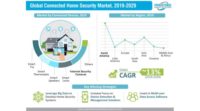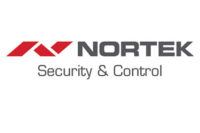Insurance is a data-driven industry. Actuarial tables calculate the probability of death, thereby enabling insurers to quantify and create products to insure against that risk. The Internet of Things (IoT) and the data streaming from devices in the home, the car, or worn on the body represent an opportunity for the insurance industry to quantify risk with greater precision than traditional methods.
Insurers are racing to gain access to data in order to quantify risk on a more granular level. Today, most insurance discount programs for smart products are cross-marketing programs focused on lifting sales and collecting data that can, over time, be analyzed to more precisely quantify risk.
In the smart home, loss-prevention products such as security systems have been in the market for decades, and it is common for insurers to provide discounts for professionally monitored security systems. However, adding connectivity to security changes the game. Owning a security system but never using it is not the same as owning a system and arming it every time you leave the home. Understanding the impact of how a security system is used is just one of many opportunities for the insurance industry to fine-tune the risk profile.
While insurance companies are clearly paying attention to the IoT space, with some creating organizational silos to focus specifically on these applications, most companies have yet to launch smart home solutions and are reticent to share details of programs in development.
While the connected home can have the potential to more precisely assess risk-enabling quantifiable discounts based on statistically proven outcomes, it will take time before the data provides quantifiable proof.
Fortunately for the insurance industry, protecting the home and property is one of the leading value propositions for the smart home. Research from Dallas-based Parks Associates shows that 51 percent of U.S. broadband households find a connected device that alerts them to smoke and fire highly appealing, and 41 percent find a device that alerts them to a water leak to be highly appealing. So, consumer demand for safety-related products will drive adoption independent of any insurance industry involvement.
At this stage of the smart home market, the opportunity for the insurance industry lies in accelerating consumer adoption by providing discounts in exchange for sharing data. In addition, the insurance industry has the opportunity to facilitate the development of new sensors that address industry-specific needs. New sensors that detect arc faults in electrical wiring, identify slow leaks in the water piping, or detect roof leaks or building structural issues can have a significant impact on the industry.
Using IoT to Mitigate/Prevent Loss
While using sensors to more precisely quantify risk is the first opportunity, taking actions based on the data to mitigate loss is a clear next step. Partnerships such as that of Panasonic Smart Home and Allianz Assist combine detection with action. When a the Panasonic smart home system detects a water leak, Allianz Global Assistance service is contacted and service personnel are dispatched to quickly identify and address the source of the leak, minimizing damage and insurance payments. In the long term, the savings from quickly addressing the issue before significant damage occurs can be passed along to customers in the form of lower insurance premiums.
While sensors that connect everything to the Internet enable new approaches to measuring risk and mitigating loss, new products that automatically act on the data to minimize or even prevent loss are beginning to enter the market, as well, because loss prevention is the ultimate goal. For example, in the automotive space, cars that brake to avoid an accident are already in the market, and removing human error altogether through self-driving vehicles will definitely have a disruptive impact on the automotive insurance market.
In the smart home, detecting a water leak quantifies the risk. Sending a plumber to investigate and correct the issue mitigates damage, but having a valve that automatically responds to a water leak signal and shuts off water to the home is even better. Additionally, security systems that detect someone approaching a home and alerts them that they are being watched is a better solution than alarming when someone breaks a window or opens a door, the insurance industry believes. Prevention and deterrence are superior to loss mitigation.
Usage-Based Insurance
The combination of connected sensors, loss mitigation services, and prevention solutions enables insurers to provide personalized insurance products. The concept of usage-based insurance — insurance based on the risk profile of an individual consumer — is now being applied to auto insurance.
Sensors are added to a vehicle to measure acceleration, braking, speed, and other metrics to understand driving patterns and the associated risk (using IoT to define risk). Additionally, usage-based insurance programs provide drivers with immediate feedback on their driving behaviors. This feedback, combined with the incentive of reduced insurance premiums, creates a powerful motivation for behavior change, and ultimately, safer driving (using IoT to prevent loss). Consumers benefit from lower insurance rates, anywhere from 5 percent to 50 percent depending on their insurer.
Insurers have the opportunity to accelerate adoption of retrofit connected vehicle devices to gain first-mover advantage and attract low-risk drivers who are open to feedback and will most benefit from usage-based rates. As vehicle manufacturers extend telematics from premium to value-tier vehicles, radically expanding the installed base of connected vehicles, insurers may eventually be forced to offer usage-based plans or risk losing share.
There is room for smart home product manufacturers and service providers to implement a similar strategy to leverage data in the home. Today, nearly 20 percent of U.S. broadband households own at least one smart product and the breadth of new devices entering the home is growing rapidly. Insurance companies have the opportunity to get ahead of the market. Partnering with smart home manufacturers and service providers to accelerate acquisition with discounts at the point of sale in exchange for sharing data is much easier than soliciting consumers after installation. Agreements that can be executed at point of sale will be essential as the market moves from early adopters to the broader mass market.



